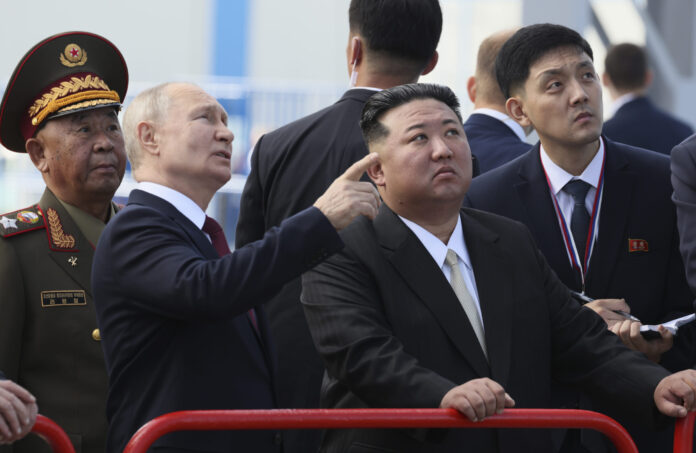As the war in Ukraine nears the two-year mark, Russian President Vladimir Putin has turned to an unlikely supplier to replenish his dwindling stockpile of short-range ballistic missiles – North Korea.
Kim Jong Un’s isolated regime has provided over 1 million artillery rounds and short-range ballistic missiles similar to Russia’s Iskander series to prop up Putin’s faltering invasion, according to weapons experts. While the missile transfer provides a new stream of revenue for heavily sanctioned North Korea, it also offers Kim an opportunity to gain valuable insights into how his country’s missiles perform in live combat.
So far, the US-provided Patriot air defense system has proven largely effective against Russian missiles in Ukraine, according to an analysis by the Center for Strategic and International Studies. In June, when Russia targeted a Patriot battery near Kyiv, the system intercepted all 34 incoming Iskander and Kinzhal missiles.
This poses a potential problem for the North Korean KN-23 and KN-24 missiles now arriving on the battlefield. Like the Iskander, these systems are designed to be quickly deployed, maneuverable in flight and accurately strike targets. But based on the Patriot’s success against the Russian missiles, analysts say it should also be able to counter this new North Korean hardware.
The Patriot missile defense system should be able to intercept North Korea’s short-range ballistic missiles, given its effectiveness against Russian Iskanders,” said Shaan Shaikh, an expert with the Center for Strategic and International Studies.
Very little data exists so far on how the North Korean missiles will perform in combat. Wreckage thought to be from the missiles was found after strikes on Kharkiv in early January, suggesting they aren’t invincible. Any lessons Kim’s regime can learn about its missiles’ effectiveness will help North Korea refine future systems and attack plans.
The transfer of these short-range ballistic missiles, with ranges of 250-500 miles, expands Russia’s options for striking Ukraine. North Korea’s transfer of several dozen SRBMs will be welcomed by Moscow, which has depleted its prewar stockpile despite efforts to increase missile production,” noted a recent report by the International Institute for Strategic Studies.
But by prolonging Russia’s bombardment campaign, the missiles could also accelerate the depletion of interceptors for Ukrainian air defenses.
In late December, Russia fired hundreds of missiles at cities across Ukraine, likely using some North Korean munitions. NATO members responded in January by pledging to ramp up Patriot missile production to reinforce Ukraine’s battered defenses.
Patriot is the only system that can deal with all types of Russian missiles,” said Ukrainian President Volodymyr Zelensky after Germany agreed to provide a Patriot battery last October. Now, Zelensky is counting on the Patriot to counter this new North Korean threat.
With its powerful radar capable of tracking 100 targets at once, the MIM-104 Patriot forms the backbone of missile defense for both Ukraine and key allies. South Korea deploys Patriot batteries around Seoul, while U.S. forces operate them at bases in Japan.
But Russia has overwhelmed defenses with barrages of missiles, a war of attrition that gradually degrades Ukraine’s interceptor stockpile. The influx of North Korean weapons will likely accelerate this strategy.
In response, NATO members in January pledged to procure 1,000 additional Patriot missiles for Ukraine at a cost of $5.5 billion. Only sustained production can counter Russia and North Korea’s deepening missile partnership.
Yet the Patriot has some advantages. Unlike Russia’s inventory of outdated S-300 and S-400 systems, the Patriot can counter multiple threats including ballistic missiles, cruise missiles and aircraft.
North Korea’s participation has also raised concerns internationally. The U.S. State Department and allies accused the regime of enabling Russia’s “brutal war of aggression” through arms transfers. For Kim, the risk is that impending battlefield data could reveal flaws in his missile technology.
But for now, North Korea continues expanding its arsenal, which likely already numbers in the thousands. The regime rang in 2023 with a new maneuverable warhead that could evade missile defenses entirely.
While the Patriot system remains Ukraine’s best chance of intercepting North Korea’s missiles, it will face a tough trial by fire. Russia’s attrition strategy combined with new North Korean technology will test the Patriot’s capabilities to the limit. But as Kim provides an economic lifeline to Russia’s faltering invasion, he also gains the chance to perfect his most lethal weapons.





















